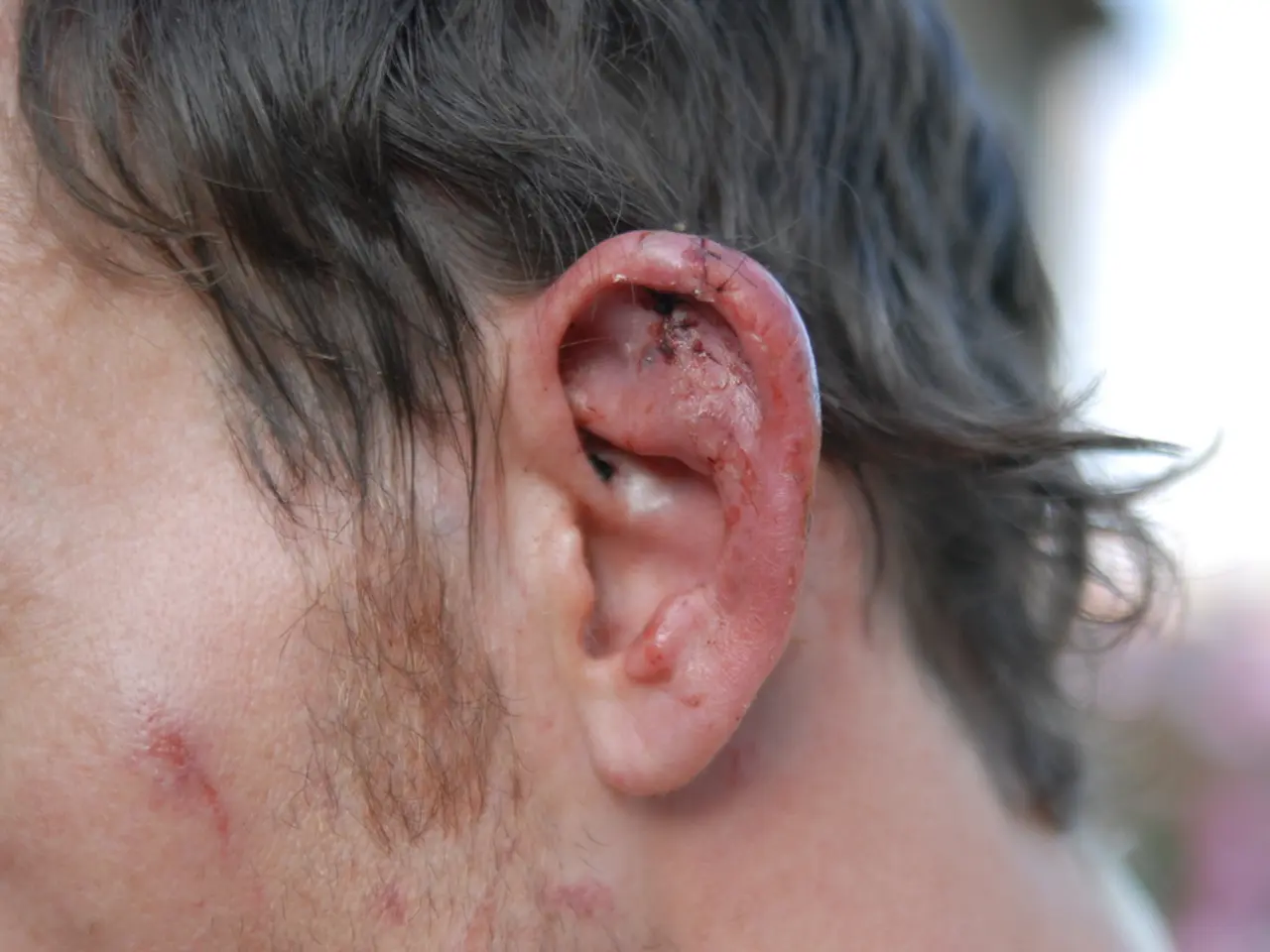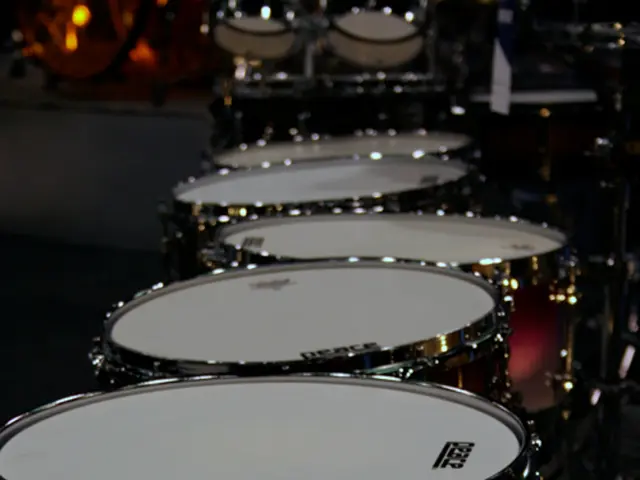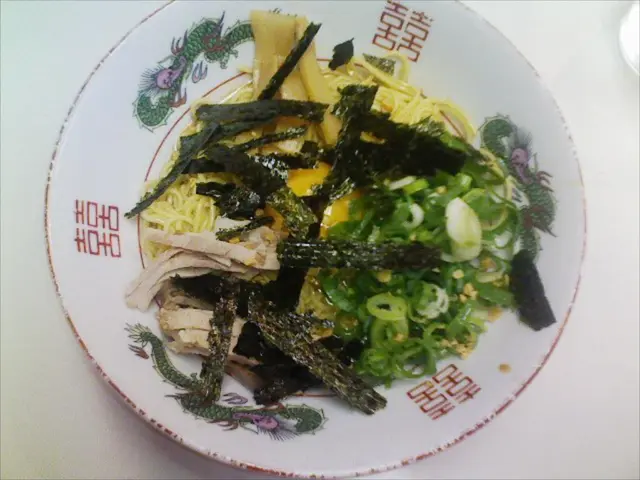Ethnicity-based distribution of uncommon and frequent blood types
In the realm of blood transfusions, understanding the distribution of blood types is crucial to ensure successful procedures and avoid triggering the immune system. This article explores the global distribution of blood types, focusing on major ethnic groups and regions outside the United States.
The ABO system, the most clinically significant blood group, classifies blood types as A, B, AB, and O based on the presence of A and B antigens. In most regions, O is the most common, followed by A, B, and AB, but the proportions differ among populations.
**East Asian Populations (e.g., China, Japan, Korea)** - Type B and Type O are generally the most prevalent, with Type B being notably higher than in Western populations. - Type AB is the rarest, but still more common than in many other regions.
**South Asian Populations (e.g., India, Pakistan, Bangladesh)** - Type B is often the most frequent, with O also common. - Type AB is generally the rarest. - Regional variation: Northern India tends to have higher O and B, southern India higher A and O.
**Sub-Saharan African Populations** - Type O is typically dominant, with high frequencies in many countries. - Type AB is the least common.
**Middle Eastern and North African Populations** - Type O is usually the most frequent, followed by A and B. - Type AB is the rarest.
**European Populations** - Type A is typically the most frequent, especially in Western and Central Europe, followed by O. - Type AB is the least common, but B is also less frequent than in Asia.
**Indigenous Populations (e.g., Native Americans, Australian Aboriginals)** - Type O is almost universally dominant, often exceeding 90%.
**Rare and Unique Blood Types** - Rh-null, Bombay, and Gwada negative are examples of extremely rare blood types.
For precise local data, country- or ethnic group-specific studies are needed, as large-scale, up-to-date, and comprehensive global surveys are limited.
In the United States, O-positive is the most common blood type, followed by A-positive for Caucasians (33%), Asians (27%), and Latin Americans (29%), and B-positive for Caucasians (9%) and Latin Americans (9%). The least common types among these groups are AB-negative for Caucasians (1%) and Latin Americans (less than 0.2%).
Certain conditions, such as thalassemia and sickle cell disease, require more careful blood matching due to their higher prevalence in specific ethnic communities. Some rare blood types and blood group systems are distinctly more common in certain ethnic groups, such as JKnull among Pacific Islanders and Asians, and RzRz among Native Americans and Alaskan natives.
Blood transfusions save millions of lives each year, and the need for these procedures remains constant, with one every 2 seconds in the United States. Ensuring a diverse and well-matched blood supply is essential to meeting this demand and ensuring the safety and success of blood transfusions worldwide.
In the context of medical-conditions and health-and-wellness, the ABO system, a crucial blood group, categorizes blood based on A and B antigens, with Type O most common in most regions, but variations exist among populations. East Asian populations, such as those in China, Japan, and Korea, prefer Type B and Type O, while Type AB is the rarest. South Asian groups, like those in India, Pakistan, and Bangladesh, often have Type B as the most frequent, with Type AB being the rarest. Sub-Saharan African populations typically exhibit Type O dominance, while Middle Eastern and North African populations usually favor Type O. European populations, particularly in Western and Central Europe, tend to have the most Type A, followed by Type O. Indigenous populations, such as Native Americans and Australian Aboriginals, commonly have almost universal Type O dominance.
In the realm of rare and unique blood types, Rh-null, Bombay, and Gwada negative are notable examples. Certain conditions, such as thalassemia and sickle cell disease, necessitate more careful blood matching due to their higher prevalence in specific ethnic communities. Some rare blood types and blood group systems are distinctly more common in certain ethnic groups, like JKnull among Pacific Islanders and Asians, and RzRz among Native Americans and Alaskan natives.
The science of understanding the distribution of these medical-conditions like atopic dermatitis, cancer (e.g., COPD, diabetes, bipolar, depression, Alzheimer's), psoriasis, obesity, and predictive health markers is ongoing and vital for ensuring accurate and successful blood transfusions worldwide. Precise local data can be obtained from country- or ethnic group-specific studies, as large-scale, up-to-date, and comprehensive global surveys are limited. In the United States, O-positive is the most common blood type among Caucasians, Asians, and Latin Americans, while AB-negative is the least common among these groups. Certain conditions, such as thalassemia and sickle cell disease, require more careful blood matching due to their higher prevalence in specific ethnic communities.
Blood transfusions play a significant role in health-and-wellness, saving millions of lives annually and remaining in constant demand, with one every 2 seconds in the United States. Ensuring a diverse and well-matched blood supply is essential to meeting this demand and ensuring the safety and success of blood transfusions worldwide.




